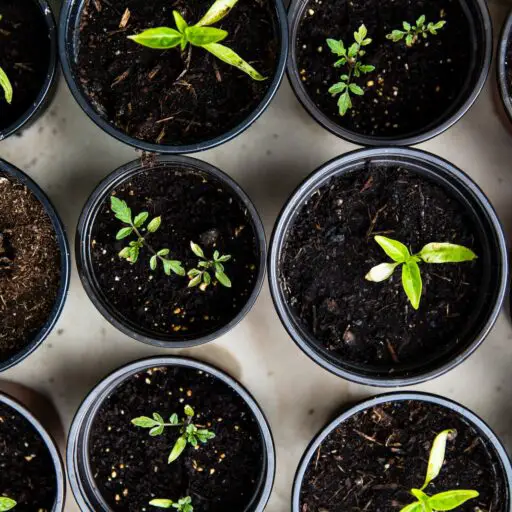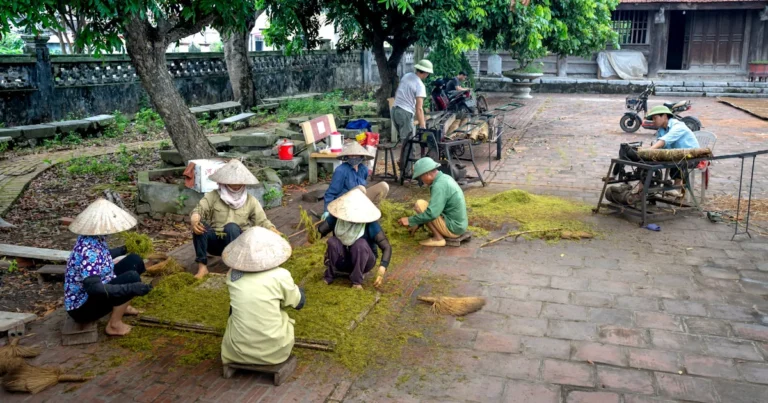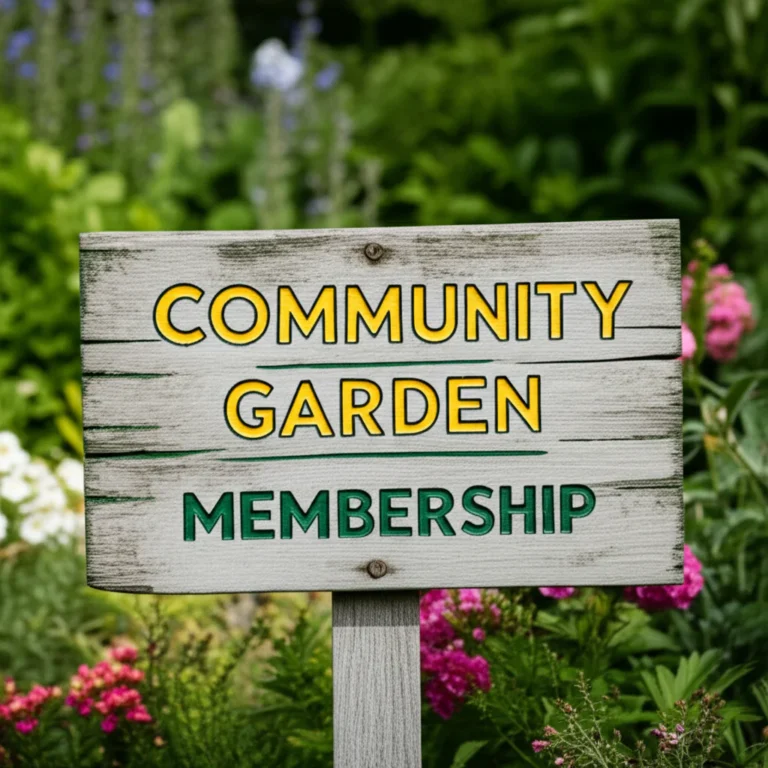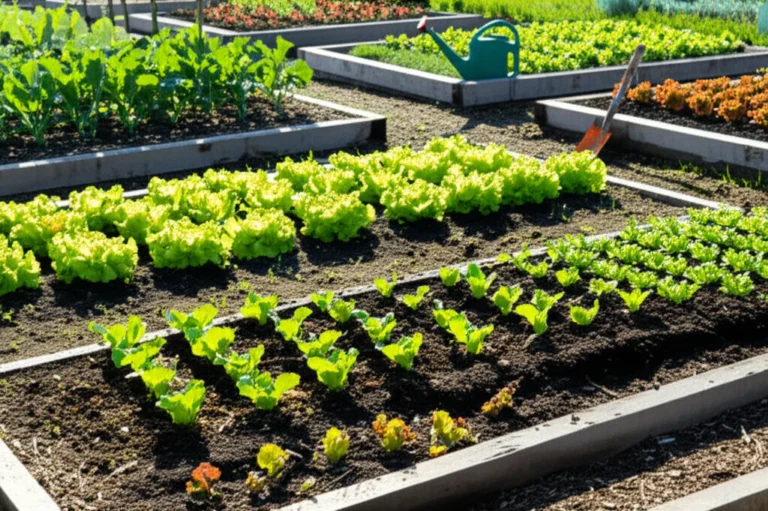Support our educational content for free when you purchase through links on our site. Learn more
Have you ever wondered how the patch of green you nurture in your community garden might be quietly influenced by what’s happening just beyond its fence? Whether it’s a noisy highway, a sprawling industrial site, or a quiet residential block, neighboring land use can dramatically shape the health, productivity, and even the very survival of community gardens. At Community Gardening™, we’ve seen firsthand how these external factors can either nurture or challenge urban green spaces—and we’re here to spill the soil on everything you need to know.
In this comprehensive guide, we’ll explore the many ways neighboring land uses—from commercial zones to agricultural fields—impact community gardens. We’ll share practical strategies to mitigate risks like soil contamination and noise pollution, dive into zoning laws that can make or break your garden’s future, and highlight inspiring success stories of gardens thriving despite tough surroundings. Curious about how to turn potential land-use lemons into lemonade? Stick around for expert tips, innovative tools, and policy insights that will empower you to grow your garden stronger than ever.
Key Takeaways
- Neighboring land use significantly affects community garden health through soil quality, air pollution, noise, and water runoff.
- Residential, commercial, industrial, and agricultural neighbors each bring unique challenges and opportunities for gardeners.
- Practical mitigation strategies include buffer plantings, raised beds, soil testing, and community engagement.
- Understanding and navigating zoning laws and policies is crucial for garden sustainability and protection.
- Innovative technologies and community partnerships can help gardens thrive even in challenging urban environments.
Ready to protect and enhance your community garden? Explore our recommended tools like soil test kits, air quality monitors, and smart irrigation systems to get started today!
👉 Shop recommended gardening tools:
- Rapitest Soil Test Kits on Amazon
- Awair Air Quality Monitors on Amazon
- Rachio Smart Sprinkler Controllers on Amazon
- Greenes Fence Raised Garden Beds on Amazon
Table of Contents
- ⚡️ Quick Tips and Facts About Community Gardens and Neighboring Land Use
- 🌱 Understanding the Roots: How Neighboring Land Use Impacts Community Gardens
- 🏡 Types of Neighboring Land Uses and Their Effects on Community Gardens
- 🌿 Environmental Factors Influenced by Neighboring Land Use
- 🛠️ Practical Strategies to Mitigate Negative Impacts from Neighboring Land Use
- 📜 Navigating Zoning Laws, Policies, and Legal Frameworks Affecting Community Gardens
- 🌍 Community Gardens as Catalysts for Urban Sustainability Amidst Land Use Challenges
- 🔍 Monitoring and Assessing the Impact of Neighboring Land Use on Garden Health
- 💡 Innovative Technologies and Tools to Support Community Gardens Near Diverse Land Uses
- 📚 Educational Resources and Workshops for Gardeners Facing Land Use Challenges
- 🎉 Community Success Stories: Thriving Gardens Despite Neighboring Land Use Issues
- 🧩 Integrating Community Gardens into Urban Planning and Development
- 📝 Conclusion: Growing Together Despite Neighboring Land Use Challenges
- 🔗 Recommended Links for Community Garden Advocates and Planners
- ❓ FAQ: Common Questions About Community Gardens and Neighboring Land Use
- 📖 Reference Links and Further Reading
⚡️ Quick Tips and Facts About Community Gardens and Neighboring Land Use
Hey there, green thumbs and urban growers! 🌿 Wondering if your beloved community garden could be affected by what’s happening just next door? Spoiler alert: Yes, it absolutely can! But don’t fret—we’ve got the dirt on how neighboring land use influences your garden’s health, productivity, and vibe.
Here are some quick nuggets from the Community Gardening™ experts:
- ✅ Zoning laws can either protect or restrict community gardens, depending on how neighboring land is classified.
- ✅ Industrial or commercial neighbors may introduce pollution risks (think soil contamination or air quality issues).
- ✅ Residential neighbors can be both allies and sources of conflict (noise, odors, or aesthetics).
- ✅ Buffer zones like hedges or fences help mitigate negative impacts.
- ✅ Soil testing is a must if your garden borders potentially contaminated land.
- ✅ Community engagement with neighbors and local government is key to long-term garden success.
Want to know how to turn potential land-use lemons into lemonade? Keep reading! And if you’re curious about the downsides of community gardens in general, check out our related article: What is a disadvantage of a community garden?.
🌱 Understanding the Roots: How Neighboring Land Use Impacts Community Gardens
Before we dig deeper, let’s plant a solid foundation. Community gardens don’t exist in a vacuum—they’re part of a complex urban ecosystem where neighboring land use plays a starring role.
Why does it matter? Because the type of land use next door can affect:
- Soil and water quality
- Air pollution levels
- Noise and light pollution
- Pest and wildlife presence
- Legal and zoning constraints
For example, a garden next to a busy highway might struggle with air pollution and dust, while one near a vacant lot could face weed invasion or illegal dumping. Understanding these dynamics helps gardeners anticipate challenges and advocate for supportive policies.
🏡 Types of Neighboring Land Uses and Their Effects on Community Gardens
Let’s break down the main types of neighboring land uses and how they can affect your garden’s growth and community spirit.
1. Residential Areas: Friend or Foe?
Residential neighbors are often your garden’s biggest fans—or its biggest critics. Here’s the scoop:
-
Pros:
- Potential volunteers and gardeners
- Increased neighborhood safety through “eyes on the garden”
- Social cohesion and community events
-
Cons:
- Complaints about noise, odors (from compost or chickens), or aesthetics
- Conflicts over garden hours or maintenance
- Risk of vandalism or theft if relationships sour
Tip: Host regular community garden events to build goodwill and keep neighbors in the loop. Check out our Community Garden Events for inspiration.
2. Commercial and Industrial Zones: Challenges and Opportunities
Gardens near commercial or industrial neighbors face a mixed bag:
-
Challenges:
- Soil contamination from heavy metals or chemicals
- Air pollution and dust
- Noise and traffic disruptions
-
Opportunities:
- Partnerships with local businesses for sponsorship or compost donations
- Potential for urban agriculture initiatives linked to economic development
Pro Tip: Always conduct soil testing if your garden borders industrial land. The EPA offers guidance on soil contamination and remediation.
3. Agricultural Land: Synergies and Conflicts
When community gardens neighbor agricultural land, it’s often a case of “birds of a feather” but watch out for:
-
Synergies:
- Shared knowledge and resources
- Pollinator corridors
- Crop rotation and organic matter exchange
-
Conflicts:
- Pesticide drift affecting organic crops
- Water competition or runoff issues
- Pest migration
Community Gardening™ anecdote: We once worked with a garden near a farm where pesticide drift was a concern. The solution? Coordinated spraying schedules and buffer plantings reduced impact dramatically.
4. Transportation Corridors and Infrastructure: Noise, Pollution, and Access
Busy roads and railways can bring:
- Noise pollution that stresses plants and gardeners alike
- Air pollution from vehicle emissions
- Dust and debris settling on leaves and soil
- Access challenges for gardeners and visitors
Mitigation: Planting dense hedges or installing sound barriers can help. Plus, raised beds reduce dust contact with soil.
🌿 Environmental Factors Influenced by Neighboring Land Use
Let’s get technical for a moment. Here are the key environmental factors your garden’s neighbors influence:
Soil Quality and Contamination Risks
- Heavy metals (lead, arsenic) and chemical residues can seep into garden soil.
- Regular soil testing through labs like Soiltest Farm Consultants is essential.
- Remediation options include raised beds with clean soil, phytoremediation plants, or soil replacement.
Water Runoff and Drainage Issues
- Impervious surfaces nearby can cause water runoff, flooding, or erosion.
- Installing rain gardens or swales helps manage excess water.
- Be mindful of potential contamination from runoff carrying fertilizers or chemicals.
Air Quality and Pollution Concerns
- Proximity to factories or highways can increase particulate matter and ozone exposure.
- Plants like spider plants and snake plants can help filter air pollutants.
- Consider timing watering and harvesting to avoid peak pollution hours.
Wildlife and Pest Interactions
- Neighboring land use affects local wildlife populations.
- Gardens near natural areas may see beneficial pollinators but also deer or rodents.
- Urban gardens near commercial zones might attract pests like rats.
- Integrated pest management (IPM) strategies are your best friend here.
🛠️ Practical Strategies to Mitigate Negative Impacts from Neighboring Land Use
Don’t despair if your garden is next to a noisy factory or a busy street! Here’s how to fight back:
Buffer Zones and Plant Barriers
- Use dense shrubs, trees, or tall grasses as natural buffers.
- Plants like bamboo, arborvitae, and ornamental grasses absorb noise and trap dust.
- Fencing combined with vines (e.g., clematis) adds privacy and beauty.
Soil Testing and Remediation Techniques
- Test soil annually for contaminants.
- Use raised beds with imported clean soil when contamination is detected.
- Add organic matter and biochar to improve soil health and immobilize toxins.
Water Management Solutions
- Install rain barrels and drip irrigation to control water use.
- Create bioswales or rain gardens to manage runoff.
- Mulch heavily to reduce erosion and retain moisture.
Community Engagement and Collaboration
- Host neighbor meetings to discuss concerns and solutions.
- Partner with local businesses or government for support.
- Educate gardeners on best practices to minimize nuisances like odors or noise.
📜 Navigating Zoning Laws, Policies, and Legal Frameworks Affecting Community Gardens
Here’s where the rubber meets the road. Zoning and land use policies can make or break your garden’s future.
Understanding Local Zoning and Land Use Regulations
- Many cities classify community gardens as “urban agriculture” or “permitted uses.”
- Some restrict gardens due to concerns about aesthetics, noise, or commercial activity.
- Check your city’s zoning code or contact your planning department.
- Resources like the Healthy Food Policy Project provide model policies.
Advocacy and Policy Tools for Garden Support
- Engage with local officials to promote garden-friendly zoning.
- Use model ordinance language from organizations like ChangeLab Solutions.
- Highlight community benefits: nutrition, safety, economic vitality.
- Address neighbor concerns proactively to reduce opposition.
Case Studies: Successful Policy Interventions
| City | Policy Highlight | Impact |
|---|---|---|
| Fitchburg, WI | Permits gardens in all zones, requires water | Increased garden establishment |
| Highland Park, MI | Encourages organic methods, limits nuisances | Improved soil and water quality |
| Chicago, IL | Allows incidental sales, limits size | Balanced community and commercial use |
These examples show how thoughtful policy can harmonize gardens with their neighbors.
🌍 Community Gardens as Catalysts for Urban Sustainability Amidst Land Use Challenges
Community gardens do more than grow veggies—they’re urban oases that:
- Combat urban heat island effects
- Improve stormwater management
- Enhance biodiversity and pollinator habitats
- Foster social equity and food security
Even when neighboring land use poses challenges, gardens can thrive by integrating sustainable practices and community partnerships. For more on the benefits, see our Benefits of Community Gardens collection.
🔍 Monitoring and Assessing the Impact of Neighboring Land Use on Garden Health
How do you know if your garden is being affected? Monitoring is key:
- Regular soil and water testing for contaminants
- Tracking plant health and yields over time
- Observing pest and wildlife patterns
- Documenting neighbor interactions and complaints
Use simple tools like soil test kits or partner with local universities for more advanced analysis. Keeping records helps when advocating for policy changes or remediation.
💡 Innovative Technologies and Tools to Support Community Gardens Near Diverse Land Uses
Technology to the rescue! Here are some tools that can help:
| Tool/Technology | Purpose | Example Brand/Product |
|---|---|---|
| Soil Test Kits | Quick contamination and nutrient checks | Rapitest Soil Test Kit (Amazon) |
| Air Quality Monitors | Measure pollution levels | Awair Element (Amazon) |
| Smart Irrigation Systems | Efficient water use | Rachio Smart Sprinkler Controller (Amazon) |
| Raised Garden Beds | Reduce soil contamination | Greenes Fence Cedar Raised Garden Bed (Amazon) |
👉 CHECK PRICE on:
- Rapitest Soil Test Kit: Amazon
- Awair Element Air Quality Monitor: Amazon
- Rachio Smart Sprinkler Controller: Amazon
- Greenes Fence Raised Garden Bed: Amazon
📚 Educational Resources and Workshops for Gardeners Facing Land Use Challenges
Knowledge is power! Here are some top resources:
- American Community Garden Association (ACGA): Offers guides on advocacy and garden management. ACGA Website
- Healthy Food Policy Project: Model policies and zoning info. Healthy Food Policy Project
- Local Extension Services: Soil testing, pest management, and workshops.
- Community Gardening™ Blog: Regular posts on garden design, policies, and events. Check out our Garden Design Ideas for inspiration.
Many cities also host free or low-cost workshops—ask your local parks department or community center!
🎉 Community Success Stories: Thriving Gardens Despite Neighboring Land Use Issues
We love a good success story! Here’s one from our own Community Gardening™ team:
The Riverside Garden Project was established next to a busy commercial district with concerns about noise and pollution. The gardeners:
- Installed a 3-foot tall hedge buffer using native shrubs
- Built raised beds with imported organic soil
- Partnered with a local business for compost donations
- Hosted monthly open houses to engage neighbors and address concerns
Result? The garden flourished, producing over 500 pounds of fresh produce annually and becoming a neighborhood hub. Local residents now view it as a green refuge rather than a nuisance.
For more inspiration, check out the perspective shared in the first YouTube video embedded earlier, highlighting how community garden plots foster biodiversity and community connection even in challenging urban settings.
🧩 Integrating Community Gardens into Urban Planning and Development
Finally, let’s zoom out. The future of community gardens depends on smart urban planning that:
- Recognizes gardens as essential green infrastructure
- Includes gardens in zoning codes as permitted uses
- Encourages multi-use spaces combining recreation, food production, and education
- Supports community land trusts to prevent gentrification and displacement
Cities like Portland, OR, and Golden, CO, are leading the way by embedding community gardens into their comprehensive plans and zoning codes, ensuring gardens thrive alongside other land uses.
📝 Conclusion: Growing Together Despite Neighboring Land Use Challenges
So, can community gardens be affected by neighboring land use? Absolutely! From soil contamination risks near industrial zones to noise and aesthetic concerns in residential areas, the land around your garden plays a starring role in its success or struggle. But here’s the good news: with knowledge, community collaboration, and smart strategies, these challenges are far from insurmountable.
We’ve seen how zoning laws can either nurture or hinder gardens, how environmental factors like runoff and air pollution demand attention, and how practical solutions—like buffer plantings, soil testing, and community engagement—can turn potential problems into thriving opportunities. Plus, innovative tools and supportive policies are increasingly empowering gardeners to grow resilient green spaces even in complex urban landscapes.
Remember the Riverside Garden Project story? It’s proof that even gardens next to busy commercial districts can flourish with the right approach. So, don’t let neighboring land use intimidate you—embrace it as part of your garden’s ecosystem and grow together!
🔗 Recommended Links for Community Garden Advocates and Planners
Ready to equip your garden with the best tools and knowledge? Here are some top picks:
-
Awair Element Air Quality Monitor:
Amazon | Awair Official Website -
Rachio Smart Sprinkler Controller:
Amazon | Rachio Official Website -
Greenes Fence Cedar Raised Garden Bed:
Amazon | Greenes Fence Official Website -
Books for Deeper Learning:
❓ FAQ: Common Questions About Community Gardens and Neighboring Land Use
What are the risks of pesticide drift from surrounding areas to community gardens?
Pesticide drift occurs when chemicals applied to nearby agricultural or landscaped areas travel through air or water to your garden. This can contaminate soil, harm beneficial insects, and pose health risks to gardeners and consumers. Gardens near farms or commercial properties should communicate with neighbors about pesticide use and consider buffer plantings or physical barriers. Regular soil testing can detect contamination early. Integrated pest management (IPM) practices in your garden can reduce reliance on chemicals, promoting a safer environment.
How does neighboring construction or tall buildings impact sunlight for community gardens?
Construction sites and tall buildings can cast shadows that reduce sunlight, crucial for photosynthesis and plant growth. This can lead to lower yields or stressed plants. Gardeners should observe sun patterns and select garden locations with optimal light exposure. Using reflective surfaces or vertical gardening can help maximize available light. If construction is temporary, consider movable raised beds or container gardening to adapt.
What types of environmental pollution from nearby land uses can harm community gardens?
Common pollutants include heavy metals (lead, arsenic), hydrocarbons from vehicle emissions, particulate matter, and chemical runoff from fertilizers or pesticides. These can degrade soil and water quality, affecting plant health and food safety. Airborne pollutants can settle on leaves, reducing photosynthesis. Gardens near industrial zones or busy roads should prioritize soil testing, raised beds with clean soil, and plant species known for pollution tolerance.
How can community gardens protect themselves from negative impacts of adjacent properties?
Protection strategies include:
- Installing buffer zones with dense vegetation or fencing to reduce noise, dust, and visual intrusion.
- Conducting regular soil and water testing to monitor contamination.
- Using raised beds with imported clean soil to avoid contaminated ground.
- Engaging in community dialogue to address concerns and coordinate activities like pesticide application or construction schedules.
- Advocating for supportive zoning and policies that recognize and protect community gardens.
📖 Reference Links and Further Reading
- Westchester County Community Gardens Policy and Legal Resources: westchestergov.com
- Healthy Food Policy Project – Zoning for Urban Agriculture: healthyfoodpolicyproject.org
- Sustainable City Code – Community Gardens on Private Property as a By-Right or Permitted Use: sustainablecitycode.org
- American Community Garden Association (ACGA): communitygarden.org
- EPA Soil Contamination and Remediation: epa.gov/soil-contamination
- ChangeLab Solutions Urban Agriculture Toolkit: changelabsolutions.org
We hope this guide has helped you see that while neighboring land use can pose challenges, it also offers opportunities for community gardens to grow stronger, greener, and more connected than ever. Ready to dig in? Let’s grow together! 🌻🌎






